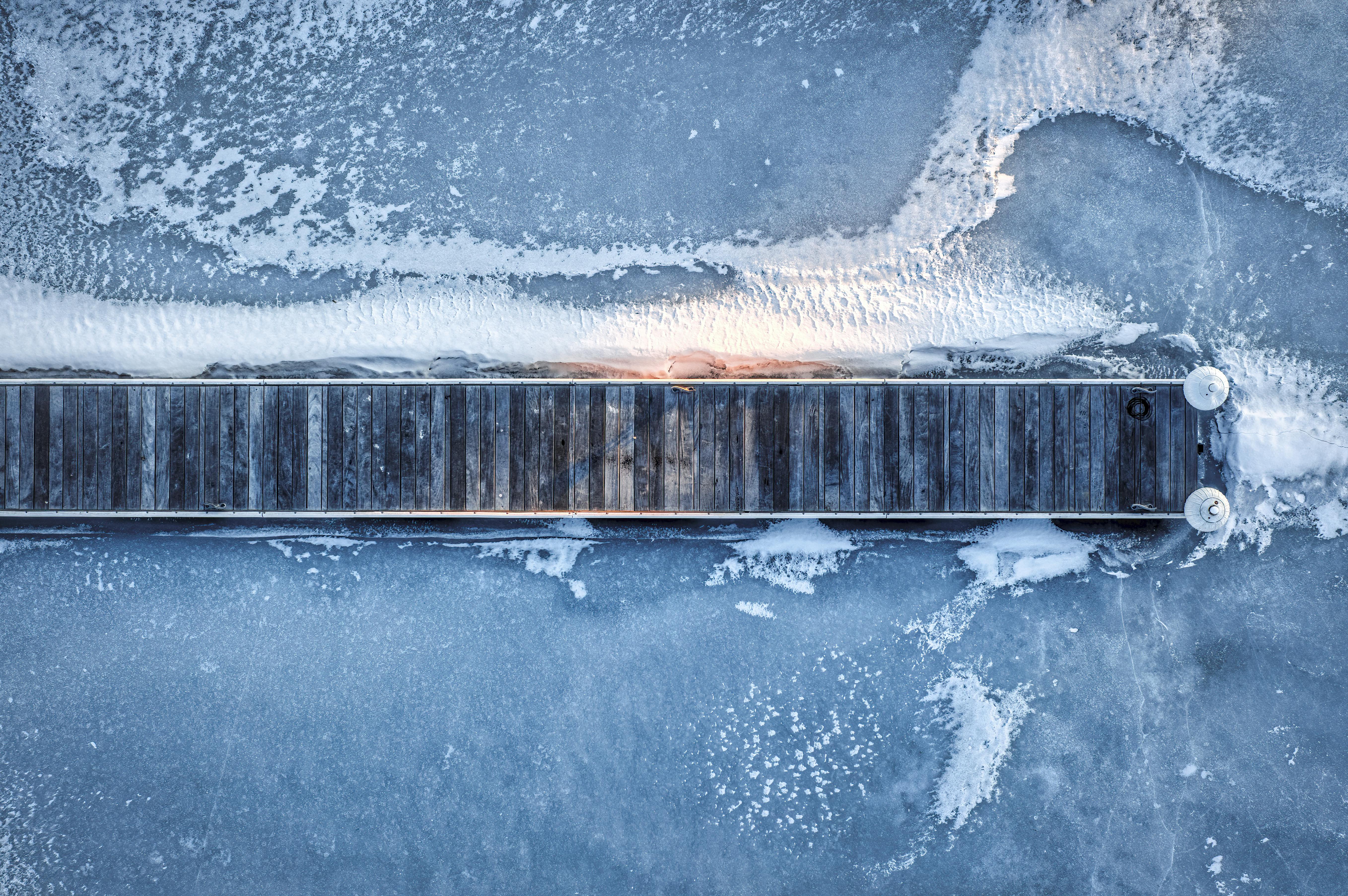Making your own distilled water is a relatively simple process that can be done with items that you likely have lying around your home. The process of distilling water involves boiling the water, collecting the steam, and cooling it back into liquid form. The result is a pure form of H2O free from impurities and contaminants. In this guide, we will show you how to make your own distilled water at home with simple household items.Distilled water is water that has been purified through a process of distillation. This process involves boiling the water and then collecting the steam that is produced. The steam is then condensed and collected, leaving behind any impurities or minerals that might have been present in the original water. Distilled water is often used for medicinal, laboratory, and industrial applications, as it does not contain any of the impurities or minerals that could potentially harm those uses.
The Benefits of Making Your Own Distilled Water
Distilled water is a purified form of water that has been stripped of minerals and contaminants through a process of distillation. This makes it ideal for many applications, such as drinking, general use in the home, and even medical use. Making your own distilled water can be more economical than buying it pre-made, and can offer several additional benefits.
One major benefit is the assurance that you are getting pure water. Distilling your own water means you know exactly what is in it and that it has been properly filtered to remove impurities. You won’t have to worry about harmful chemicals or other contaminants in your drinking water.
Making your own distilled water also ensures you have a steady supply on hand when you need it. Instead of having to buy large containers of pre-made distilled water from the store, you can make just enough for what you need when you need it. This can be especially helpful if you are using distilled water for medical purposes or for other specialized uses.
Finally, making your own distilled water is often much more cost-effective than buying
How To Choose The Right Container For Making Distilled Water
Distilled water is a type of filtered water that has been processed to remove impurities. It is often used in medical and scientific applications, as well as for drinking. To ensure the best quality distilled water, it is important to select the right container for making it. Here are some tips on how to choose the right container for making distilled water.
The first step in selecting a container for making distilled water is to find one that is made from food-grade material. Stainless steel or glass containers are ideal because they are non-porous and will not leach any toxins or other substances into the water. Be sure to avoid plastic containers, as these can contain harmful chemicals that can be released into the water.
The size of the container should also be taken into consideration when selecting one for making distilled water. A smaller container will require fewer boiling cycles to produce a given amount of distilled water than a larger one, but it will also take longer to fill up with enough liquid for distilling. On the other hand, a larger container will require more boiling cycles but will be able to produce more distilled water
What Equipment Is Needed To Make Distilled Water?
Distilled water is water that has been purified through a process of distillation. The equipment needed to make distilled water involves a heat source, a container for boiling the water, and another container to collect the condensate. The heat source can be either electric or gas-powered. The boiling container should be made of stainless steel or other non-reactive material; plastic containers should not be used as boiling can release toxins from the plastic into the water. The condensation container should also be made from non-reactive material such as glass or stainless steel, and it should have a lid to keep contaminants out. A cooling coil may also be used to cool the condensate before it is collected. Lastly, an activated carbon filter may be used to further purify the distilled water prior to use.
In summary, the equipment needed to make distilled water consists of a heat source (electric or gas powered), a container for boiling the water (made of non-reactive material such as stainless steel), a condensation container (also made from non-reactive material such as glass or stainless steel)
Preparing The Container For Making Distilled Water
Distilling water is an effective way to create pure, clean drinking water. However, in order to do this, you must first prepare the container you will be using for the distillation process. This includes ensuring that the container is clean and free of any contaminants that could affect the water’s purity. Here are some tips for preparing a container for making distilled water:
The first step is to make sure that the container you are using is made of a material that is safe and suitable for distillation, such as glass or stainless steel. It should also be free of any cracks or other damage that could cause contaminants to enter the distilled water.
Next, it is important to thoroughly clean and sanitize the container before use. This can be done by washing it with soap and hot water or using a commercial sanitizing solution. It is also important to rinse the container thoroughly afterwards to ensure that there are no traces of cleaning products left in it.
Once the container has been cleaned and

How To Start Boiling Water To Make Distilled Water
Making distilled water is a relatively simple process that can be done with the right materials and equipment. All you need is a pot, some regular tap water, and an empty container to collect the distilled water. Boiling water is the first step in the process of making distilled water. Here’s how to get started:
Fill a pot with tap water and place it on the stovetop or other heat source. Heat the water until it reaches a rolling boil. Allow it to boil for at least 10 minutes in order to remove any impurities from the tap water.
Once the boiling has stopped, carefully pour the hot water into an empty container or pitcher. Make sure that all of the boiling water has been transferred before proceeding to the next step.
Place a lid on the container and allow it to cool for several hours before attempting to use it as distilled water. It’s important to remember that distilled water should never be consumed directly from its source as it could contain bacteria or other contaminants that could make you ill
Collecting The Condensed Steam To Make Distilled Water
The process of collecting the condensed steam to make distilled water is one of the most common ways to produce purified water. This process involves converting steam into liquid form, which is then condensed and collected. The resulting liquid is called distilled water.
The steam is produced by boiling water in a container and allowing it to rise into the air. As the steam rises, it cools and condenses on walls and other surfaces. Once cooled, the condensate forms droplets that can be collected. This condensate is then processed further to remove any impurities or contaminants that may be present in it.
Distilled water is commonly used in laboratories, medical facilities, and for industrial applications where pure water is essential. It can also be used for drinking purposes if desired, as it does not contain any of the potentially harmful compounds found in tap or groundwater sources.
Collecting and processing condensed steam to make distilled water requires careful monitoring and specialized equipment such as evaporators, condensers, distillation columns, pumps, filters,
Filtering the Collected Condensed Steam to Make Pure, Clean, Distilled Water
Distilled water is an important part of many processes in industry and home use. It is used in a variety of applications, from cooking to cleaning and medical purposes. Distillation is the process of purifying water by removing impurities through boiling point evaporation and condensation. To make distilled water, steam is collected from boiling water and then filtered to remove any particles or contaminants. This condensed steam is then filtered through several layers of filtration media to remove impurities like minerals, bacteria, and other particles. The final product is pure, clean, distilled water that can be used for a variety of purposes.
The process of distillation involves collecting the steam that rises from boiling water. The heat causes the water molecules to evaporate, leaving behind any solid matter or contaminants in the form of particles or dissolved substances. The collected steam is then cooled and condensed back into liquid form with all its impurities intact. A series of filters are then used to separate out this impurity-laden liquid from the pure distilled water. Depending on the type of filter used

Conclusion
Distilling water is an easy and cost-effective way to make your own pure water right at home. With the right equipment and a few simple steps, anyone can make their own distilled water quickly and easily. The end result is a pure, safe drinking water that can be used for any purpose.
The process of distilling water requires very little maintenance or attention, making it a great choice for those who want to take the hassle out of making their own drinking water. Additionally, it is an environmentally-friendly option that helps reduce waste from plastic bottles.
Overall, distilling your own water is an excellent way to get pure, safe drinking water without having to worry about buying single-use plastic bottles or dealing with complicated filtration systems. With just a few supplies and a bit of knowledge, you can have fresh distilled water whenever you need it!

